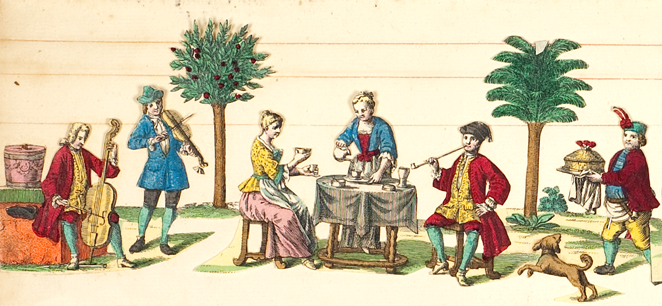Collection context
Summary
- Abstract:
- Four Men and a Prayer mss., 1928, consist of materials relating to the film of that title, directed by John Ford and released in 1938.
- Extent:
- 1 Box (1 standard)
- Language:
- Materials are in English .
- Preferred citation:
[Item], Four Men And A Prayer mss., Lilly Library, Indiana University, Bloomington, Indiana.
Background
- Biographical / Historical:
Ford was christened Sean Aloysius Feeney but changed his name after joining his older brother Francis, who had taken the name Ford, in Hollywood in 1913. John Ford began his motion picture career as an actor, stunt man, and prop man. In 1917 he became a director on the film The Tornado and directed over 130 films during his lifetime. Ford married Mary McBryde Smith in 1920 and they had two children: Patrick Roper born in 1921 and Barbara Nugent born in 1922.
Ford's first great success, The Iron Horse in 1924, came after directing about fifty other films, chiefly Westerns. From 1927 to 1939 Ford directed more than thirty films, only one of which was a Western. He won his first Academy Award during this period for The Informer (1935), a film about the 1922 Irish rebellion. His next Academy Awards were for The Grapes of Wrath (1940) and How Green Was My Valley (1941). Two documentaries that he directed during World War II, The Battle of Midway and December 7th, also received Oscars. His last Academy Award was for another of his Irish films The Quiet Man (1952).
An enthusiastic member of the Naval Reserve, Ford formed the Naval Field Photographic Reserve in early 1940. This unit was assigned to the Office of Strategic Services and Ford was ordered to report to Washington on September 11, 1941, just after completing How Green Was My Valley. He spent the war years doing documentary work in the Pacific, North Africa, Europe and India.
In February 1945 Ford took a leave of absence from the Navy to film They Were Expendable. He used his salary received from that picture to create the Field Photo Home, a club for the veterans of the Field Photographic Unit. He ended his naval duties on September 28, 1945.
The following March Ford and producer Merian C. Cooper formed Argosy Productions. This company produced eight pictures, seven of which were directed by Ford. Among these were three of Ford's most famous and commercially successful films--the trilogy of Cavalry stories: Fort Apache, She Wore a Yellow Ribbon, and Rio Grande. Ford continued making films throughout the 1950s and early 1960s. His last film was 7 Women in 1966. Two documentaries about Ford and his work were made in 1971: The American West of John Ford and Peter Bogdanovich's Directed by John Ford. The former was co-produced by Ford's grandson Daniel Sargent Ford. A few months before his death Ford received the American Film Institute's First Annual Life Achievement Award. He died on August 31, 1973.
- Scope and Content:
The collection consists of copies of stills both used in and cut from the final release and two VHS video tapes of the film.
- Acquisition information:
- Gift: 1991
- Physical location:
- Lilly - Stacks
Indexed Terms
Access
- RESTRICTIONS:
-
This collection is open for research.
Many collections are housed offsite; retrieval requires advance notice. Please make an appointment a minimum of one week in advance of your visit.
- TERMS OF ACCESS:
-
Photography and digitization may be restricted for some collections. Copyright restrictions may apply. Before publishing, researchers are responsible for securing permission from all applicable rights holders, then filling out the Permission to Publish form.
- PREFERRED CITATION:
-
[Item], Four Men And A Prayer mss., Lilly Library, Indiana University, Bloomington, Indiana.
- CAMPUS:
- Indiana University Bloomington
- LOCATION OF THIS COLLECTION:
-
1200 East Seventh StreetBloomington, Indiana 47405-5500, USA
- CAMPUS:
- Indiana University Bloomington
- CONTACT:
-
(812) 855-2452liblilly@indiana.edu

